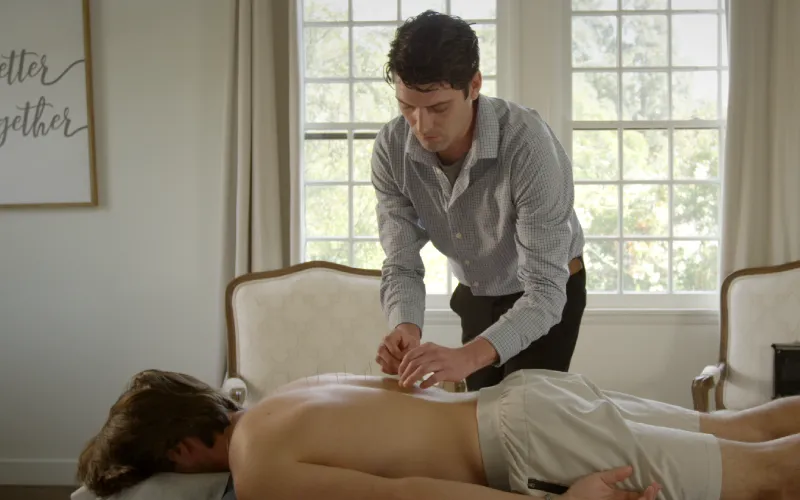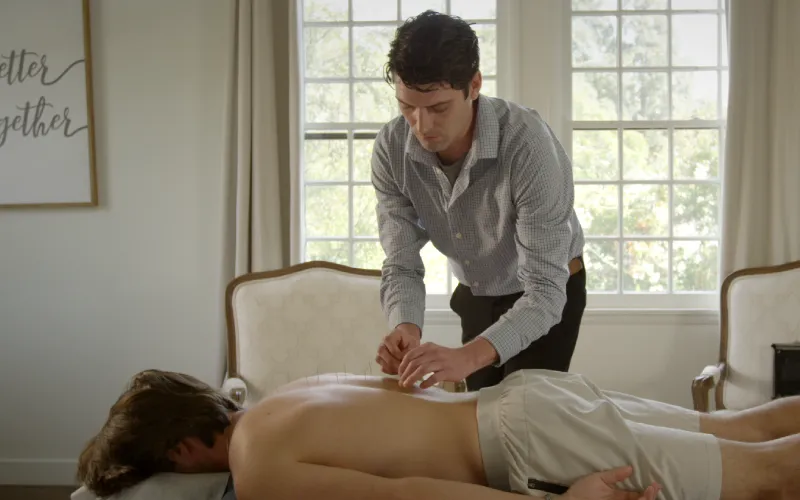
Table of Contents
- Who Xanax Addiction Affects in Malibu
- Xanax vs. Other Benzos Local Misuse Patterns
- Xanax and Co-Occurring Mental Health Conditions
- Need Help With Prescription Drug Addiction?
- Emergency Visits & Hospital Data for Xanax Overdoses
- Rehab Enrollment Rates for Xanax in Malibu
- Which Therapies Help Most in Malibu Xanax Treatment?
- How Insurance Affects Xanax Addiction Treatment Access
- Find Compassionate Xanax Addiction Help Near You

Xanax, a widely prescribed benzodiazepine in the United States, sees unique Xanax patterns in Malibu. According to recent state and county data, prescription rates in Malibu have remained consistently higher than in many surrounding Southern California communities—a trend attributed in part to the area’s access to mental health care and prescribing providers. At the same time, local treatment centers report that Xanax is among the top substances cited during assessment interviews, alongside alcohol and opioids.
These factors contribute to an overall picture of evolving Malibu addiction trends, particularly in how residents often start with prescribed use before evolving into dependence. While population size makes Malibu’s total case figures smaller than in urban Los Angeles areas, the per-capita indicators suggest above-average misuse rates. This is supported by prescription monitoring program data showing both therapeutic use and apparent cases of early refills or “doctor shopping” within the region.
When compared to wider Southern California rehab enrollment data, Malibu’s facilities tend to see a higher proportion of clients seeking help specifically for Xanax and related benzodiazepine misuse—indicating that awareness may be driving early intervention here. This trend suggests a localized need for continuous education, tighter prescription monitoring, and accessible treatment options focused on anxiety-related medication misuse.
Who Xanax Addiction Affects in Malibu
Malibu High School Trends in Xanax Use
Youth Xanax misuse in Malibu is an increasingly urgent concern, with alarming patterns emerging across local high schools. Reports from school counselors and community health surveys indicate that misuse of prescription benzodiazepines like Xanax has grown, particularly among students aged 15 to 18. This trend may stem from stress, peer influence, and the accessibility of pills through social networks and online platforms.
Malibu’s affluence can paradoxically fuel under-the-radar substance misuse. Students may have greater financial access to diverted prescription drugs while also facing performance pressures that contribute to self-medication behaviors. In response, educators and mental health advocates in Malibu have emphasized early intervention measures, awareness campaigns, and improved access to adolescent treatment programs.
Gender Differences in Xanax Abuse Stats
While Xanax misuse affects all genders in Malibu, data suggests some key differences in abuse patterns and outcomes. Women are more likely to be prescribed benzodiazepines and may initiate use for anxiety or sleep disorders, which can evolve into dependency. Men, on the other hand, may engage in higher-dose recreational use, leading to different clinical outcomes and overdose risks. Tailored treatment plans that consider these differences are critical for effective support and recovery.

Xanax vs. Other Benzos: Local Misuse Patterns
In Malibu, benzodiazepine misuse has taken many forms—but Xanax remains one of the most commonly misused. While medications like Ativan (lorazepam), Klonopin (clonazepam), and Valium (diazepam) are also present in prescriptions and recreational use, Xanax is often preferred for the quick onset of its calming effects. This fast-acting nature can lead to a cycle of dependency more rapidly than with other benzos, especially when taken without medical oversight.
Data from local treatment centers and hospitalizations show Xanax leads in emergency admittances tied to benzodiazepine misuse. Its reputation for misuse among young adults and those seeking fast relief from anxiety contributes to its heightened presence in drug detox admissions. Meanwhile, other benzos like Klonopin may be more frequent in long-term prescriptions but appear less often in acute overdose cases.
Understanding these distinctions is critical for both prevention and treatment strategies. Substance use care in Malibu often requires tailoring treatment plans to specific benzo profiles—especially important for dual diagnosis care, where mental health conditions coincide with misuse. Comparing Xanax to its counterparts helps professionals determine risk patterns and develop more targeted therapeutic approaches.
Xanax and Co-Occurring Mental Health Conditions
In Malibu and across Southern California, many individuals struggling with Xanax misuse also face underlying mental health challenges such as anxiety disorders, depression, or PTSD. This overlap is commonly referred to as a dual diagnosis—a condition where substance use disorder and a mental health disorder co-exist. Dual diagnosis stats show that people with co-occurring conditions often face more complicated recovery paths, often requiring integrated treatment approaches.
Xanax is frequently prescribed to manage anxiety or panic disorders. However, as dependence builds, individuals may misuse the drug to self-medicate emotional distress. This can create a feedback loop where psychological symptoms worsen as misuse continues, increasing the risk of Xanax overdose rates and other health complications.
Treating Xanax addiction in Malibu necessitates a comprehensive approach—one that addresses the person’s emotional wellbeing alongside their physical dependence. Facilities in the area often provide dual diagnosis care that includes psychotherapy, medication management, and support for emotional regulation. Recognizing and treating these interwoven conditions can greatly improve long-term recovery outcomes and reduce relapse rates, especially in cases where anxiety or trauma plays a central role in substance use.
Emergency Visits & Hospital Data for Xanax Overdoses
Local Hospital Data on Xanax Overdoses
In recent years, Malibu and greater Los Angeles County have seen growing concern over Xanax-related emergency situations. According to health data from the LA County Department of Public Health, benzodiazepine overdoses, particularly involving alprazolam (commonly known as Xanax), have contributed to a measurable uptick in ER visits. These incidents often stem from misuse, polydrug combinations (especially with opioids or alcohol), or accidental overuse from prescription sources.
Within nearby hospital systems serving Malibu residents, adult males between 25 and 44 years of age account for a large proportion of benzo-related admissions. Youth Xanax abuse in Malibu is also reflected in a small but concerning share of cases involving teens presenting with signs of overdose or severe withdrawal.
Although Malibu’s population is relatively small, its proximity to major LA hospitals supplies a more detailed public health snapshot. This reinforces existing Malibu addiction trends and the urgent need for targeted local outreach, detox support, and follow-up mental health care solutions to help minimize repeat overdose incidents.

Rehab Enrollment Rates for Xanax in Malibu
Understanding local rehab enrollment trends can provide vital insight into how Malibu is responding to the growing problem of Xanax misuse. In recent years, more individuals in Malibu have sought treatment for benzodiazepine addiction, with Xanax frequently cited as the primary substance of concern. While precise data specific to one town like Malibu is limited, regional facilities across Southern California have reported increased admissions related to prescription anti-anxiety medications, especially among people aged 18–34.
Treatment typically begins with medically supervised detox, especially for individuals who experience withdrawal symptoms such as anxiety spikes, insomnia, or seizures. Drug detox admissions in Malibu often correspond with a rise in Xanax misuse identified in healthcare and prescription data. Following detox, many residents transition into residential rehab, intensive outpatient programs (IOPs), or dual diagnosis treatment if co-occurring mental health conditions are present.
Recent reports indicate that Malibu’s enrollment in Xanax-specific treatment tracks has grown in tandem with wider awareness of benzodiazepine dependency risks. Multiple Malibu centers now offer individualized plans that include behavioral therapies, holistic approaches, and medication-supported treatment. As more individuals recognize the signs of Xanax misuse, local enrollment is expected to grow, highlighting both increased need and destigmatization around seeking professional support.
Which Therapies Help Most in Malibu Xanax Treatment?
Malibu treatment centers often rely on evidence-based therapies to address Xanax dependency, with Cognitive Behavioral Therapy (CBT) being one of the most widely used. CBT helps individuals identify patterns of thought and behavior that contribute to Xanax misuse and equips them with coping mechanisms to manage stress and anxiety without relying on medication. For many in Malibu, CBT for Xanax offers a personalized, skill-building approach that blends well with both residential and outpatient settings.
Medication-assisted treatment (MAT) may also be used, especially for severe dependency. MAT typically includes tapering protocols with longer-acting benzodiazepines under medical supervision to reduce withdrawal symptoms safely. Some facilities integrate holistic therapies—like mindfulness, yoga, and somatic work—to complement clinical care and promote emotional regulation. The combination of these methods creates a multifaceted treatment environment that supports long-term recovery, catered to the specific needs of Malibu residents. To better understand Malibu Approaches to Xanax Rehab, exploring local programs can provide valuable insights into therapy effectiveness.

How Insurance Affects Xanax Addiction Treatment Access
Accessing treatment for Xanax addiction in Malibu often hinges on the type of insurance coverage a person has. Many residents rely on major providers like Blue Cross Blue Shield (BCBS), UnitedHealthcare, or Aetna to cover detox and rehab services. These plans typically cover medically supervised detox and outpatient or inpatient care, especially when treatment is deemed medically necessary.
However, coverage can vary significantly based on policy details, network restrictions, and the type of treatment facility. Some Malibu rehab centers work closely with insurers to streamline pre-authorization and billing, making it easier to begin care quickly. For those without insurance, state-funded programs or private sliding-scale options may also be available, ensuring that treatment remains within reach for those seeking help for benzodiazepine misuse.
Find Compassionate Xanax Addiction Help Near You
Understanding the nuances of Xanax addiction and local trends in Malibu can be the first step toward recovery. Access to supportive, evidence-based treatment is essential—whether you’re seeking help for yourself or supporting a loved one. With many facilities in and around Southern California offering tailored services, you can find programs that align with specific needs, from medically supervised detox to cognitive behavioral therapy for benzodiazepine misuse. If you’re ready to explore your options, compassionate professionals are nearby and ready to help guide your next steps.
Frequently Asked Questions
What percentage of Xanax users seek treatment in Malibu?
While exact statistics for Malibu are limited due to small sample sizes, regional data suggests fewer than 20% of Xanax users seek professional help. However, Malibu's access to notable treatment centers may contribute to slightly higher engagement rates compared to rural areas.
Is Xanax addiction more common in Malibu than LA?
Xanax misuse is a concern throughout Southern California, but rates in Malibu are generally comparable to or slightly lower than in urban Los Angeles. Socioeconomic factors and access to private healthcare often lead to earlier intervention in Malibu.
How many overdose cases involve Xanax in Malibu?
Although overdose data specific to Malibu is limited, county-level reports show that benzodiazepines, including Xanax, are implicated in nearly 30% of prescription drug overdose deaths. Many cases involve polysubstance use with opioids or alcohol, increasing the danger.
What age groups are most affected by Xanax in Malibu?
Adolescents and young adults—particularly those between 16 and 25—show the highest rates of Xanax misuse in Malibu. This trend is linked to peer influence, academic stress, and increasing mental health challenges among youth.
Are there gender differences in Xanax addiction stats?
Yes, women are more likely to be prescribed Xanax, often for anxiety or insomnia, but both men and women report similar misuse rates. Women may be more likely to seek treatment, while men are at slightly higher risk of overdose when combining substances.
What mental health issues co-occur with Xanax addiction?
Common co-occurring disorders include generalized anxiety disorder, depression, and PTSD. Many individuals misuse Xanax to self-medicate, making dual diagnosis treatment essential for long-term recovery.
How often is Xanax misuse linked to anxiety in Malibu?
A significant portion of Xanax misuse in Malibu stems from attempts to manage untreated or poorly managed anxiety. Local clinics report that anxiety-related misuse accounts for over 60% of presentations involving benzodiazepines.
Do Malibu rehabs accept insurance for Xanax treatment?
Most licensed Malibu rehab facilities do accept insurance, including PPO plans and select HMOs. Coverage varies depending on the policy and provider, so it’s important to verify benefits before enrollment.
What are the detox rates for Xanax users locally?
Detox admissions for benzodiazepines like Xanax in Malibu have increased steadily over the past decade. While numbers fluctuate annually, Xanax-related detox stays make up a notable portion of the county’s prescription sedative treatment admissions.
What therapies are most effective for Xanax dependence?
Cognitive Behavioral Therapy (CBT) has strong evidence for effectiveness in treating Xanax dependence. Other helpful methods include tapering protocols, group therapy, and integrative approaches like mindfulness or trauma-informed care.









































